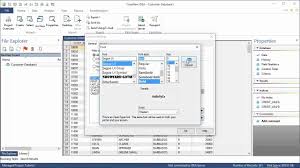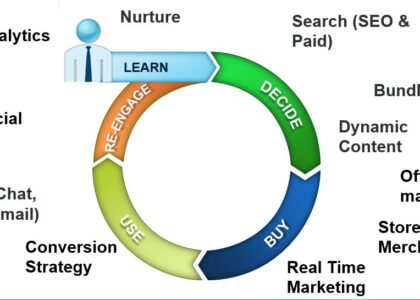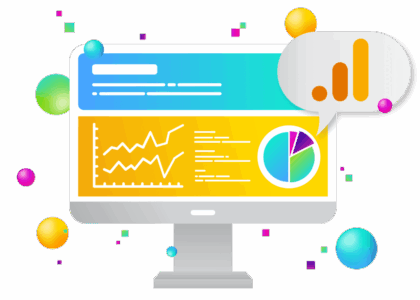The Power of Data Analysis: Unleashing the Potential of Ideas
In today’s data-driven world, the ability to harness and analyse data is crucial for unlocking the full potential of ideas. Data analysis plays a key role in transforming raw information into valuable insights that can drive innovation, decision-making, and growth.
Turning Ideas into Actionable Insights
By applying data analysis techniques to diverse datasets, businesses and individuals can gain a deeper understanding of trends, patterns, and correlations. This analytical process allows for informed decision-making based on evidence rather than intuition alone.
Identifying Opportunities and Challenges
Data analysis enables us to identify both opportunities and challenges within our ideas. By examining historical data or conducting predictive analysis, we can anticipate future trends, mitigate risks, and seize new possibilities that may have otherwise gone unnoticed.
Enhancing Creativity and Innovation
Data analysis serves as a catalyst for creativity and innovation by providing valuable insights that inspire new ideas and solutions. By analysing customer preferences, market trends, or operational efficiencies, we can tailor our strategies to meet evolving demands effectively.
Driving Business Success
Businesses that embrace data analysis as a core component of their operations are better positioned to achieve success in today’s competitive landscape. By leveraging data-driven insights, organisations can streamline processes, enhance customer experiences, and optimise performance across all levels.
Conclusion
The power of data analysis lies in its ability to transform abstract ideas into tangible outcomes. By incorporating data analysis into our decision-making processes, we can unlock new possibilities, drive innovation, and propel our ideas towards realisation. Embracing the potential of data analysis is not just about understanding information – it’s about empowering ideas to reach their full potential.
8 Essential Tips for Effective Idea Data Analysis
- Define clear objectives before starting the analysis.
- Ensure data quality by cleaning and preprocessing the data.
- Choose the right tools and techniques based on the type of data and analysis goals.
- Visualise data to identify patterns and trends more easily.
- Consider using statistical methods to draw meaningful conclusions from the data.
- Document your process and findings for future reference and reproducibility.
- Stay updated with new trends and technologies in data analysis for continuous improvement.
- Collaborate with domain experts to gain valuable insights and validate your analysis.
Define clear objectives before starting the analysis.
Before delving into data analysis, it is essential to establish clear objectives that outline the purpose and desired outcomes of the analysis. Defining specific goals helps focus the analytical process and ensures that the insights gained are relevant and actionable. By setting clear objectives upfront, individuals and businesses can streamline their data analysis efforts, making them more efficient and effective in extracting valuable insights to support decision-making and drive innovation.
Ensure data quality by cleaning and preprocessing the data.
To maximise the effectiveness of idea data analysis, it is essential to ensure data quality through thorough cleaning and preprocessing of the data. By meticulously cleaning and preparing the dataset, including removing errors, handling missing values, and standardising formats, analysts can enhance the accuracy and reliability of their insights. This critical step lays a solid foundation for robust analysis, enabling more precise conclusions and informed decision-making based on high-quality data.
Choose the right tools and techniques based on the type of data and analysis goals.
When embarking on the journey of idea data analysis, it is essential to select the appropriate tools and techniques that align with the nature of the data and desired analysis objectives. By carefully choosing the right tools and methodologies tailored to the specific characteristics of the data and the goals of the analysis, one can ensure accurate results and valuable insights. Whether it involves utilising statistical methods, machine learning algorithms, or data visualisation tools, selecting the most suitable approach is key to unlocking the full potential of data-driven ideas.
Visualise data to identify patterns and trends more easily.
Visualising data is a powerful technique in idea data analysis that allows individuals to identify patterns and trends more easily. By representing complex datasets graphically through charts, graphs, or interactive visualisations, analysts can quickly spot correlations, outliers, and recurring themes that may not be apparent from raw numbers alone. Visualisation not only simplifies the interpretation of data but also enhances the communication of insights to stakeholders, making it a valuable tool for transforming data into actionable information.
Consider using statistical methods to draw meaningful conclusions from the data.
When engaging in idea data analysis, it is essential to consider utilising statistical methods to extract meaningful insights from the data. By applying statistical techniques, such as hypothesis testing, regression analysis, or clustering algorithms, one can uncover patterns, relationships, and trends within the dataset that may not be apparent at first glance. These methods provide a robust framework for drawing accurate conclusions and making informed decisions based on the data’s quantitative evidence, enhancing the validity and reliability of the analytical process.
Document your process and findings for future reference and reproducibility.
Documenting your process and findings in idea data analysis is essential for future reference and reproducibility. By carefully recording each step taken, from data collection to analysis techniques employed, you create a valuable resource that not only aids in understanding your conclusions but also allows for the replication of your results. This documentation ensures transparency, facilitates collaboration with others, and enables you to build upon previous insights effectively. In a fast-paced world where data is constantly evolving, thorough documentation becomes a cornerstone for maintaining accuracy and credibility in data analysis practices.
Stay updated with new trends and technologies in data analysis for continuous improvement.
To enhance the effectiveness of idea data analysis, it is essential to stay informed about the latest trends and technologies in the field of data analysis. By keeping abreast of new developments, tools, and methodologies, individuals and businesses can ensure continuous improvement in their analytical processes. Embracing innovation in data analysis not only enhances the quality of insights generated but also enables more efficient decision-making and a competitive edge in today’s dynamic business environment.
Collaborate with domain experts to gain valuable insights and validate your analysis.
Collaborating with domain experts is a crucial tip when it comes to idea data analysis. By working closely with professionals who have in-depth knowledge and experience in a specific field, you can gain valuable insights that may not be apparent through data analysis alone. Domain experts can provide context, identify key variables, and offer nuanced perspectives that help validate the accuracy and relevance of your analysis. This collaborative approach not only enhances the quality of your findings but also ensures that your conclusions are grounded in real-world expertise, making your data-driven decisions more robust and effective.






